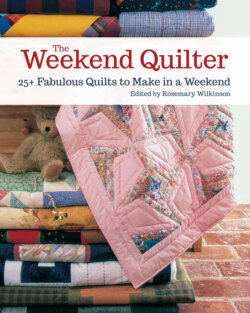Читать книгу The Weekend Quilter - Группа авторов - Страница 8
На сайте Литреса книга снята с продажи.
DEVELOPMENT OF TECHNIQUES
ОглавлениеThe art of quiltmaking has been with us for many generations. Quiltmaking techniques were first brought to British shores by the Crusaders, who found them much in use in the Middle East. By the time of the Victorian era, quilting was an established art form in many households in Britain. The skilled needlewoman was indeed both an artist and a designer, piecing together intricate designs from an array of wonderful fabrics.
Much of the patchwork done at this time was either the style known as crazy patchwork, made in sumptuous fabrics and embellished with stitches and beads, or geometric piecing, made of simple geometric shapes stitched over papers before being joined together with a whipstitch. This latter method has come to be known as English paper piecing. In the United States, pioneer women developed a technique—the patchwork block—that has become an American art form; this method enables quiltmakers to piece their quilts in small units before assembling the quilt top. The revival of patchwork in Britain in the 1970s was very much based on these blockmaking techniques.
If we look at many patchwork quilt patterns, they can be broken down into smaller units consisting of strips, squares, and triangles. For decades, quiltmakers have cut these shapes using templates and then pieced them together either by hand or by machine. Such templates have been invaluable tools for the patchworker, and they still are when more intricate shapes are used. However, modern lifestyles often demand a quicker approach. The advent of the rotary cutter has sped up the process, allowing the quiltmaker to achieve pleasing results in much less time, for example, in just a weekend.
All of the quilts in this book are quick projects in which the pieces are cut with a rotary cutter and machine-pieced. These projects allow you to express creativity in a short period of time.
